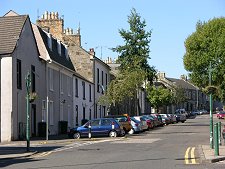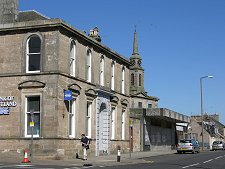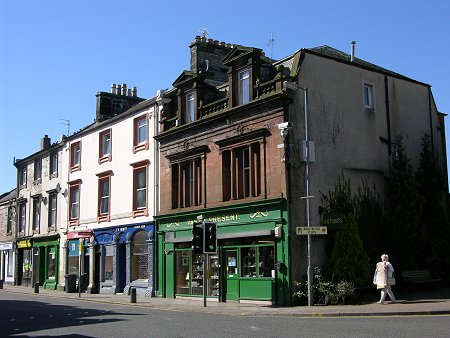 Lainshaw Street |
Stewarton lies at a crossing point of the Annick Water six miles north of Kilmarnock and within commuting distance of Glasgow and Irvine. This part of North Ayrshire is attractively rural in nature and Stewarton has served as a waypoint servicing through routes, as well as a town of some significance.
Stewarton is known as the Bonnet Toun and as early as the 1400s it was engaged in the production of this traditional Scottish headwear. The association with bonnet making was resurrected in 1932 when the long defunct Stewarton Bonnet Guild, first established in 1590, was re-established. Its main role these days is to organise the Festival Week that takes place in June each year.
By 1850 the textile industry in Stewarton employed some 2500 people and power knitting machines were displacing hand looms at an increasing rate. The establishment of a gas works in 1832 had enabled working hours to extend beyond the availability of daylight for the first time and what had been a craft industry was becoming increasingly industrialised.
By this time Stewarton's most famous son had made his mark on the world. David Dale was born here in 1739 and went on work as a weaver in Paisley. He was later the driving force behind the establishment of the remarkable mill complex at New Lanark, now a World Heritage Site.
As Stewarton grew it was unusual amongst industrial Scottish towns in one respect: there were no inns. As late as 1929 the population voted to keep the town dry. Some time since Stewarton has fallen in line with the rest of Scotland in this respect.
Today's Stewarton serves more as a dormitory for Glasgow, Kilmarnock and Irvine than as a major centre in its own right. Nonetheless elements of its earlier industrial heritage still remain and the town continues to convey a sense of the bustle of times gone by.
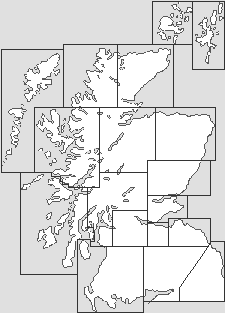
|
|
|
Visitor InformationView Location on MapWhat3Words Location: ///grid.beyond.warms |
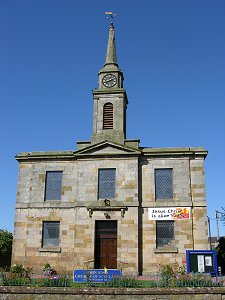 John Knox Church of Scotland |
